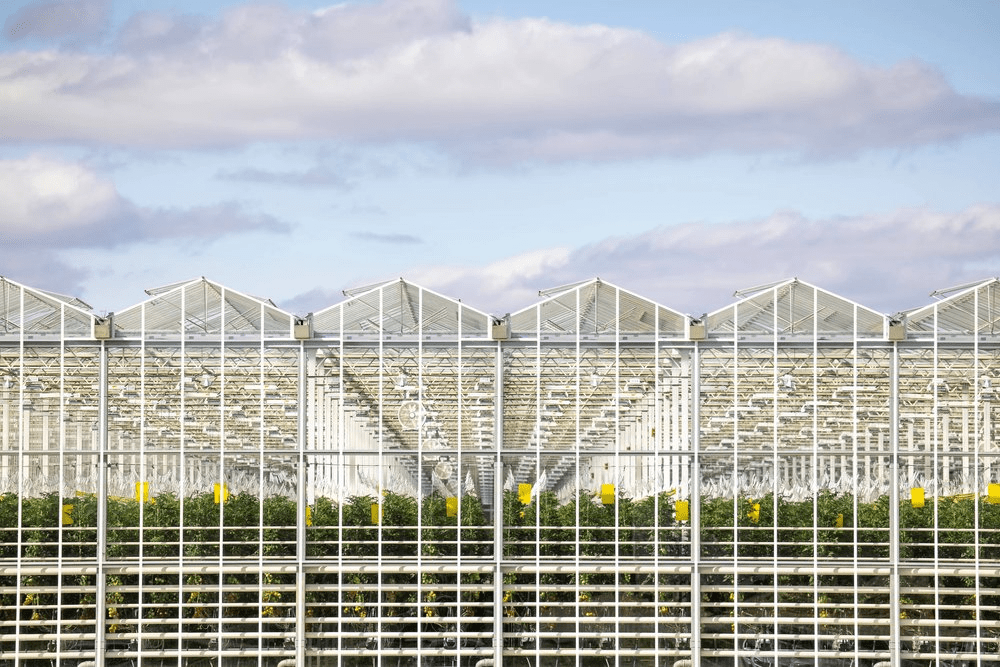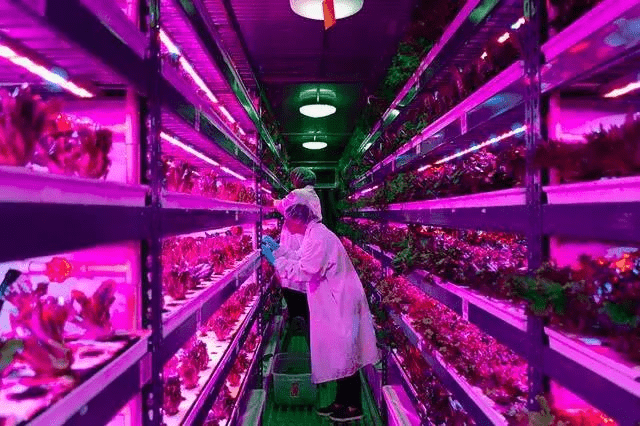Jun 10, 2022
Vertical Farms Have The Vision, But Do They Have The Energy?

Editor’s Note: We’ve long been calling for more upfront transparency about the high energy requirements of indoor farming. Progress in the industry’s sustainability can only be made when we are honest about how far we have to go. Drawing on data collected by Agritecture and WayBeyond in the 2021 Global CEA Census, this article dives into the current state of affairs of the industry’s energy consumption, and asks where we can go from here.
CONTENT SOURCED FROM EMERGING TECH BREW
Written By Jordan McDonald
Indoor farming could usher in a dramatic shift in the way humans grow food, taking the natural and unpredictable processes of traditional farming and transitioning them to a process as tightly run as a Broadway play.

Credit: AppHarvest
The industry—also known as controlled-environment agriculture (CEA) is set to skyrocket in the next four years. In 2021, the global indoor-farming industry was valued at $79.3 billion, with the potential to climb to $155.6 billion by 2026, per Pitchbook.
Despite its growth, there are structural challenges the industry needs to overcome before CEA can hold a candle to traditional farms. Challenges include hiring an adequate number of technical experts, securing the funds to build out massive warehouses and greenhouses, and paying to install and operate the expensive slate of tech—from automation hardware and software, to sensors, to tens of thousands of LED lights—needed to monitor and maintain crops.
But perhaps the biggest challenge is energy consumption. Unlike traditional outdoor growing, which relies on the tried-and-true power of the sun, indoor farms are dependent on LED lighting. Energy costs can run high, threatening profitability, and using fossil-fuel powered electricity can undermine the potential environmental benefits of indoor farming. This is especially true for vertical farms in particular.
“A lot of these light companies are really making good strides with efficiency and driving down costs, which is a big component, probably the biggest component, of these companies becoming profitable,” Alex L. Frederick, senior emerging technology and venture capital analyst at Pitchbook, told Emerging Tech Brew.
“The cost from lighting has been the biggest kind of production cost over the past couple decades. It's still a very significant cost for indoor growing facilities, indoor growing operators, but it's coming down a lot,” he added.
Getting energized

Credit: Crop One
Indoor farming is dependent on energy-intensive systems like LED lamps, HVAC air-conditioning systems to circulate and control the temperature, water-filtration systems to circulate and purify the water used to hydrate or mist plants, and, in some cases, a closed-loop system of fish habitation and waste management to gather nutrients from fish and turn them into fertilizer for plants.
Frederick said that in areas like the Middle East or Singapore, where ideal outdoor growing conditions or space are limited, “there's a huge value proposition there, that likely supersedes the energy costs to run it.”
According to the 2021 Global CEA Census Report, CEA farms can use up to 90%–95% less water than traditional farms, by emphasizing water conservation and reuse. About two-thirds (66%) of the indoor farms surveyed reached this threshold.
However, the report found that vertical farms have a significantly higher average energy use at 38.8 kWh per kg of produce compared to traditional greenhouses, which average 5.4 kWh per kg.


